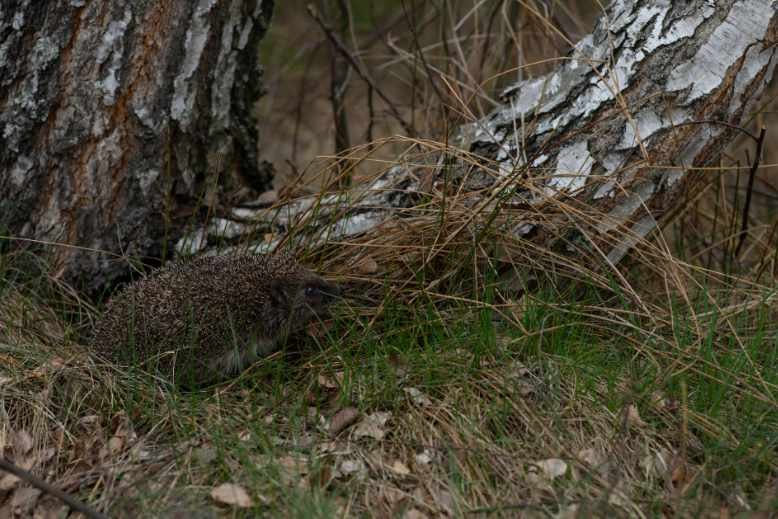Are you searching for a way to provide shelter to the adorable hedgehogs in your garden? Look no further! In our ultimate guide to building a hedgehog house, we’ll show you how to create a cozy retreat for these spiky creatures.
By following our step-by-step instructions, you’ll be able to construct a hedgehog house that not only provides a safe nesting spot but is also eco-friendly. Our guide incorporates sustainable materials to ensure that your hedgehog guests have a comfortable and insulated abode.
From choosing the right location for your hedgehog house to designing an entrance that safeguards against predators, we’ll cover all the essential aspects of creating a hedgehog haven. We’ll even provide tips on how to make your garden more hedgehog-friendly, attracting these delightful critters to their new home.
Don’t miss out on the opportunity to contribute to hedgehog conservation and have the joy of observing these charming creatures up close. Join us and embark on a fulfilling journey to build a hedgehog house that will make a difference in their lives.
Why build a hedgehog house?
Hedgehogs are fascinating creatures that play a vital role in maintaining the balance of ecosystems. By building a hedgehog house, you provide them with a safe refuge from predators and harsh weather conditions. Hedgehog houses also act as a crucial habitat during the breeding season and offer protection to mothers and their young.
Moreover, hedgehogs are primarily insectivores and help control the population of garden pests such as slugs and snails. By attracting hedgehogs to your garden, you create a natural and organic form of pest control, reducing the need for harmful chemical pesticides.
Building a hedgehog house is a rewarding way to contribute to hedgehog conservation and create a thriving ecosystem in your backyard. Let’s delve deeper into understanding hedgehog behavior and habitat needs.
Understanding hedgehog behavior and habitat needs
Hedgehogs are nocturnal creatures that prefer to dwell in areas with dense vegetation, such as hedgerows, woodlands, and gardens. They are solitary animals, except during the breeding season when males and females come together.
When choosing a location for your hedgehog house, it’s important to consider their natural habitat preferences. Hedgehogs require an environment that offers protection, warmth, and access to food and water sources. By replicating these conditions, you can create an inviting space that hedgehogs will be drawn to.
Selecting the right location for your hedgehog house
Choosing the right location is crucial for the success of your hedgehog house. Hedgehogs prefer secluded spots away from direct sunlight and strong winds. Look for an area in your garden that provides natural cover, such as shrubs or overgrown vegetation.
Avoid placing the hedgehog house near busy areas, such as pathways or frequently visited parts of your garden, as this may cause unnecessary disturbance. Instead, opt for a quiet corner where hedgehogs can feel safe and undisturbed.
Materials and tools needed for building a hedgehog house
Before we dive into the construction process, let’s gather the necessary materials and tools for building a hedgehog house. You’ll need the following:
1. A sturdy wooden box or crate: Choose a box or crate that is at least 16 inches wide and 12 inches tall, with a spacious interior for hedgehogs to move around comfortably.
2. Insulation materials: Use natural materials such as straw, dry leaves, or shredded newspaper to provide insulation and warmth inside the hedgehog house.
3. Roofing materials: Opt for eco-friendly options like wooden shingles or recycled plastic roofing to protect the hedgehog house from rain and other elements.
4. Nails and screws: Secure the wooden components together using nails or screws, ensuring a sturdy structure.
5. Saw and drill: These tools will be necessary for cutting and drilling holes in the wooden box or crate.
6. Sandpaper: Smooth any rough edges or surfaces to prevent injuries to hedgehogs.
Now that we have everything we need, let’s move on to the step-by-step guide to building a hedgehog house.
Step-by-step guide to building a hedgehog house
1. Begin by preparing the wooden box or crate. If necessary, cut any excess parts to achieve the desired size and shape.
2. Sand the edges and surfaces of the box or crate to ensure a smooth finish, minimizing the risk of splinters or injuries to hedgehogs.
3. Create an entrance hole that is approximately 4 inches in diameter. This will allow hedgehogs to enter and exit the house comfortably while deterring larger animals from entering.
4. Install a removable roof to allow easy access for cleaning and inspection. Ensure that the roof is securely attached but can be easily lifted when needed.
5. Line the interior of the hedgehog house with insulation materials such as straw, dry leaves, or shredded newspaper. This will provide warmth and comfort for hedgehogs during colder months.
6. Place the hedgehog house in a suitable location in your garden, ensuring it is well-hidden and protected from the elements.
7. Monitor the hedgehog house regularly, checking for any signs of occupancy or necessary maintenance.
Tips for ensuring a cozy and safe environment inside the hedgehog house
Creating a cozy and safe environment inside the hedgehog house is essential for the well-being of these spiky creatures. Here are some tips to ensure their comfort:
1. Avoid using materials such as hay or grass, as they can become damp and moldy, posing health risks to hedgehogs.
2. Ensure the entrance hole is not obstructed by any vegetation or debris, allowing easy access for hedgehogs.
3. Position the hedgehog house away from ponds or water features to prevent accidental drowning.
4. Regularly check the insulation materials and replace them if they become wet or moldy.
5. Avoid using chemicals or pesticides in your garden, as they can be harmful to hedgehogs and their food sources.
Maintaining and cleaning the hedgehog house
Proper maintenance and regular cleaning of the hedgehog house are important to ensure its longevity and hygiene. Follow these steps to keep the hedgehog house in optimal condition:
1. Remove any debris, leaves, or spider webs from the entrance hole and surrounding areas.
2. Inspect the roof for any damage or leaks and repair them promptly.
3. Replace the insulation materials inside the hedgehog house if they become wet, moldy, or soiled.
4. Clean the interior of the hedgehog house annually using a mild disinfectant to prevent the buildup of bacteria or parasites.
Attracting hedgehogs to your new hedgehog house
Now that your hedgehog house is ready, it’s time to attract hedgehogs to their new home. Here are some tips to make your garden more hedgehog-friendly:
1. Provide a variety of natural food sources such as insects, slugs, and snails by minimizing the use of chemical pesticides.
2. Create a hedgehog highway by cutting small holes at the bottom of fences or walls, allowing hedgehogs to roam freely between gardens.
3. Install a shallow, wildlife-friendly pond to offer hedgehogs a source of fresh water.
4. Plant native flowers and shrubs to attract insects, which are a vital part of a hedgehog’s diet.
5. Avoid using artificial lighting at night, as it can disrupt the natural behavior and feeding patterns of hedgehogs.
Other ways to create a hedgehog-friendly garden
Building a hedgehog house is just one step towards creating a hedgehog-friendly garden. Here are some additional ways to support these delightful creatures:
1. Create a leaf pile or log pile where hedgehogs can find shelter and hibernate during the winter months.
2. Avoid using slug pellets or other chemical deterrents, as they can be harmful to hedgehogs and other wildlife.
3. Provide a hedgehog feeding station with a shallow dish of water and a small bowl of cat or dog food.
4. Incorporate wild areas in your garden, allowing grass and plants to grow naturally, providing hedgehogs with foraging opportunities.
5. Join local hedgehog conservation groups or initiatives to learn more about hedgehogs and contribute to their protection.
Conclusion: Enjoying the benefits of a hedgehog-friendly backyard
Building a hedgehog house is not just a rewarding DIY project; it’s a commitment to conserving a species that plays a crucial role in our ecosystem. By following our ultimate guide, you’ve created a cozy retreat for hedgehogs, providing them with a safe haven and contributing to hedgehog conservation.
Remember to maintain and clean the hedgehog house regularly, ensuring a comfortable environment for these fascinating creatures. By making your garden hedgehog-friendly, you’ll not only enjoy the pleasure of observing hedgehogs up close but also create a thriving ecosystem that benefits the entire natural world.
So, go ahead and embrace the joy of creating a hedgehog-friendly backyard. Start building your hedgehog house today and embark on a fulfilling journey that will make a difference in the lives of these charming spiky visitors.





